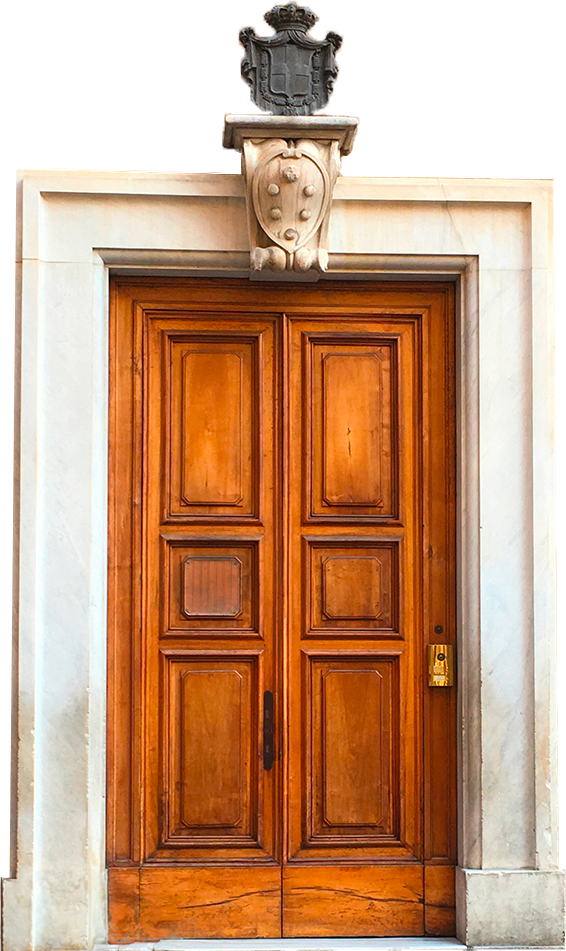Galleria dell’Accademia Museum
We could consider the “date of birth” of the Accademia Gallery to be 1784 , date in which the Grand Duke Pietro Leopoldo Habsburg Lorraine (the family that ruled Florence from the end of the Medici family until the proclamation of the monarchy in Italy) gathered here the Academy of drawing’s art and other artists organizations . He used the areas of the former St. Matthew’s Hospital and of the ancient convent of St. Niccolo di Cafaggio.
It was thought to be an academy, to teach drawing, painting, and sculpture… the Academy of Fine Arts!
The Accademia Gallery is a small treasure trove of masterpieces in Florence renowned for housing Michelangelo’s famous David, but it offers much more beyond that iconic statue. This museum features an exquisite collection of Renaissance art, including sculptures, religious paintings, and early works by Florentine masters such as Botticelli, Ghirlandaio, and del Sarto. The museum also showcases an array of musical instruments and plaster casts, making it a rich, multifaceted cultural experience that provides insight into the evolution of art from the 13th to 16th centuries.
Mallets and Chisels
Michelangelo
He is definitely the star of the Accademia Gallery with his David (transferred here from Piazza della Signoria in 1873), the unfinished Prisoners (thought for the tomb of Pope Julius II ) and the unfinished St. Matthew (thought for the Duomo).
The fact that the Prisoners and St. Matthew are unfinished gives us a big help in recognizing the differences in technique between the art of Michelangelo and the art of many other sculptors.
Giambologna (clay model of the rape of the Sabine woman).
Lorenzo Bartolini ( one of the favorite sculptors of the nineteenth-century European aristocratic families).
Luigi Pampaloni ( one of the best student of Lorenzo Bartolini)
Brush and Colors
Giotto, Bernardo Daddi (student of Giotto), Taddeo Gaddi (student of Giotto), Perugino (the teacher of Raphael), Filippino Lippi (the student of Botticelli), Mariotto Albertinelli, Fra Bartolomeo, Botticelli, Giovanni di ser Giovanni was known as “lo scheggia” (brother of Masaccio). We will point out the differences between a Gothic altarpiece and a Renaissance altarpiece Some altarpieces have both, Gothic and Renaissance features.
Staves and notes
Stradivarius
The Grand Prince Ferdinando De Medici loved music very much and he helped the musicians a lot. In order to play music in his palace, he asked Stradivarius in 1690 to realize 5 musical instruments, known as the Medici Quintet (one Viola Tenor, one Viola Contralto, two Violins, and one Cello). Two of them (the Viola Tenor and the Cello ) are here in the department of the musical instruments of the Accademia Gallery!
Bartolomeo Cristofori. He modified the mechanism of the harpsichord: the piano was born!
The reference periods of this tour range from 1300 to 1800.
FAQ about Accademia Gallery private guided tour
Do we need to buy tickets in advance to visit the Accademia?
Yes, you do, I can reserve the tickets for you in advance (if we still find availability) and you will pay for it once we will be at the museum.
Will we skip the line with the advanced tickets?
We will skip the long line but we will have a kind of short line anyway. We won’t be the only visitors with reserved tickets.
Can we arrange this tour shorter than 1 hour?
Of course, you can, all my tours are tailor-made.
Can we mix this tour with other tours?
Yes, you can.
Can we book only this 1,5 hour tour with you?
Yes, but it would be great if you book also another tour, maybe the Uffizi Tour 🙂




